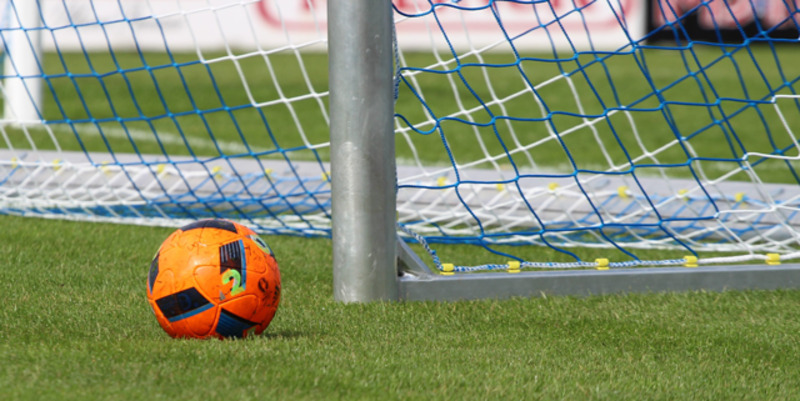National team players are not born at the end of the year
The physical capabilities of the great football talents that are born in the final quarter in Denmark, are less than that of those whom are born in the first two quarters.
October 24th, 2017

Does your son dream about having a professional football career, but is also born in the last months of the year? In that case there is a high probability that he will have to give up achieving that dream sooner or later. The tendency in Danish talent development for many years, has been that boys that are born in the months between January and July, have a greater chance of joining the Danish national team.
If we look at the current Danish national team members – from U16 to the A-team – we only see 27% of the players born in the second half of the year. It is further seen, that the least amount of these players are born in the final quarter, where only 9% of the 141 players are born.
The Danish Football Association (DBU) is well aware of this issue, and they are concerned for these statistics. The newspaper ‘Politiken’, asked the talent chief Flemming Berg for a comment this summer, when the 9% had fallen to 7%.
-Logically there should be born an equal amount of great talents in the last quarter of the year, as there are born in the first. Therefore, the talents born in each quarter should be more distributed, at around 25% in each. When taking this into consideration, it is an extreme realisation that only 7% of talents are born in October, November and December. If we can manage to change this estimate, we are likely to find further greater talent, which is vital for a small country like Denmark, where we need to get as much out of the talent that we have, as possible.
Relative age effect
But why are so few national players born in October, November and December? The reason is found in that the national youth team is put together on the basis of the calendar year that players are born in, and the physical development plays a major role in the growth of a talent. For example, a boy who is born in January has a natural muscular advantage in the teenage years above a boy born in December, because especially in a game like football, where the physical development is equally important – if not more important – than technique and experience. At least when it comes to identifying talents at a young age.
This concept is known as RAE (Relative age effect), and it is not a problem that is experienced only in Denmark. The problem is not specifically experienced within the sport of football either. This concept is applicable in many other sports all over the world. The younger you are, the greater influence the concept has.
Currently, there is not a single player on the U16 national team that is born later than June 2002. This means, that a great talent who is born in October has a high probability of not being chosen for the national youth team, and therefore misses their chance in participating in the extra quality training, that the players who are a little older are entitled to. Therefore, a great amount of Danish talent is lost alone to the cause of their age, even though they might individually be greater talents.
Even the players who are born in the second part of the year, who today are living the dream as professional athletes, have experienced that the lacking physical strength has been a challenge and obstacle on the path to success from the youth team to the adult national team.
- I was told that, I wasn’t big enough. Not fast enough. I was actually close to quitting football, because it was so demotivating to be picked on because I was small, Lucas Andersen who was born on the 13th of September, recalls from the time he was downgraded to AaB’s second team at a young age. Today he is playing professionally for a Swiss team, and participated on the Danish U21 team who competed this summer at the European championships.
A late birth month should therefore be seen as a constraint on developing the potential. Not a barrier. If the talent and the passion is great enough, it is still possible to become success within the sport of football. Daniel Agger is a clear example of this, as even though he is born in December, he still has managed to play for Liverpool for several years, and is the captain of the Danish national team. Agger was made the Football player of the year in 2012, as the first born in December in 36 years. However, he still had to wait until U20 until he played his first national game, which illustrates that the RAE problem was also an issue 15 years ago.
Future national teams for the small
The Danish football association (DBU) has since 2013 attempted to combat the RAE problem, by developing future national teams on U15 till U17 levels, as a supplement to the original national youth teams. The purpose has been to create teams based on players with strong technical and tactical properties, so that their lacking muscle strength, that is first developed at a later stage, are less of an obstacle. DBU are however making it clear that the efforts are to be made from the clubs.
TIP: Try out our free line up builder
-It has to come from the clubs. Because for our U-national teams we choose players from the best clubs, that find these players from smaller clubs, that again already have gone through the selection process internally. And the relative age effect is already seen in the U6-U7-U8 age, it is therefore important that this effort is shared by all the clubs, Flemming Berg commented in June.

The focus of the club is naturally first and foremost on its own interests, but around the country the clubs are making changes in order to reduce the amount of talents that are lost. Some of the country’s best talent developers include FC Nordsjælland, who in past couple of years has attempted to establish U13, U14 and U15 teams twice a year, where after the players are distributed into teams based on their development rather than their age.
-They look like each other more physically, which makes it easier to see which players can think fast, and which players have more talents, than when there is a huge difference in their relative size. Mistakes are often made, when the perceived power and talent, is actually due to the player’s further physical development, Jan Laursen who is the sports chief of FC Nordsjælland, stated last year to the newspaper Jyllands-Posten.
Even though the future national teams, have developed the ‘Best teenager in the Superliga of the year 2016/2017’ Mikkel Duelund, whom participated in the U21 European Championships this summer, it is still too early to make any conclusion on the effect on the national teams of the future, as the project only has been running for 4 years so far.
However, the fact of the matter is that there is room for improvement. In the important national games against Montenegro and Romania that were recently played, only two players were born in the last quarter of the year – one of these being Kasper Schmeichel, who has grown up in the English talent system. This leaves Kasper Dolberg as the only Danish national team player, that is born in the last quarter, on the 6th of October 1997.